|
We will 'scan' the crystal-clear paper edition of my published article for free access as usual. The point is for everyone to make use of all good quality translations for personal development, understanding and growth! Of course, this is a multi-dimensional experience involving the mind and body. That is psychological and physical growth within the context of understanding 'existential' reality and the making sense of the 'ageing' process. When young, it is the 'existential' reality that appears to be eternal and go on forever! Those who are older understanding that this 'existential' reality changes in both quality and meaning as the chronological age increases! All of this experience is held together with 'awareness' or what is today often termed 'consciousness' studies. Whatever we like to call 'being alive' (religious people call it by all different names), we must develop the conscious awareness functionality so that it profoundly 'penetrates' the very essence of material reality! This ability (and experience) can only 'deepen' with age and cannot do anything else! This is the basis of 'Mastery' which has nothing to do with the vigour of youth - which must be fully enjoyed, understood and explored, before the next and far more profound stage of development occurs when older age sets in! Getting old is 'good' and essential for the wisdom-essence of all genuine Chinese martial arts practice! All young people will get old and it is advisable that they prepare for this experience by studying all the Classical Texts that have been written by older people for the youth to benefit from! The search for 'truth' is like looking continuously for an non-existent abstract concept! Everyone seems to be saying it is 'here' - but very few people actually possess anything like a working definition of reality! Why is this? It is because reality cannot be 'seized', 'controlled', 'possessed' or 'limited' to human perception! The capacity to be 'aware' is very much concerned with the concept of 'time served'. This is to say that the older we get - the longer we have been 'looking' at reality! We 'look' - but we must also 'penetrate' the fabric of reality (which seems to confront humanity like an unclimbable wall)! The martial arts forms we practice are part of the reality our minds come into contact with every day. The external fowns are desiged to exist 'this side' of the wall - whilst the 'internal' forms exist 'that side'! Yes - this is because human perception must be 'first 'stilled' - and then 'expanded' so that the entirety of reality is both penetrated and enbraced! The Taijiquan Classic facilitates this entire process!
0 Comments
As I get older, physical training seems to be spilling over into a continuous psychological or conscious manifestation that is circular and spiralling in manifestation and ethereal in nature! Yes - training must be rooted in the material realm - but once properly rooted, that is, once all the appropriate martial skills have been learned, practiced, perfected and applied, something happens with this experience which is like an echo broadcasting out into the wilderness, except, of course, it is none of these things, even though it shares certain characteristics with these things. It is like thunder and lightning appearing as two different aspects - even though both are intimately related. Sometimes, when sat meditating, I experience all the gongfu forms being practiced simultaneously as if I am sat in a central nexus surrounded by light! When I re-emerge, the material world appears just the same and I get on with life. In fact, when I perform the gongfu movements again, there is often a new freedom dependent entirely upon the meditative experience.
Critically Examining the ‘Fist Frame’ (拳架-Quan Jia) as the Foundation of Taijiquan Practice11/27/2021 Contribution & Translation Shifu Adrian Chan-Wyles Beginners learn Taijiquan by replicating the "fist frame" (拳架-Quan Jia) - or the ‘physical structure’ of the Taijiquan style as taught by their teacher. The teacher uses the ancient method of teaching one step and one sequence at a time, so that each student can learn each step and each sequence before moving on to the next section. The teacher ‘expresses’ each movement one by one, whilst the practitioner imitates these movements ‘one by one’ until they become natural. This process is termed the "leading frame" (领架 - Ling Jia). Although the “fist frame” defines the physical appearance of the Taijiquan style, the essential and underlying reality of these movements contains an extremely rich content. It not only contains its extensive martial application, but this body of knowledge is closely connected to the internal strength-building (内功 - neigong) exercises. Authentic Taijiquan is passed on from one generation to the next through its readily recognisable ‘fist frame’ or stylised form. It is only through the correct preservation of the “fist frame” that all the other ‘hidden’ techniques are preserved and passed-on. To effectively learn a style of Taijiquan, you must first seek out the correct “enduring image” (形象 - Xing Xiang), as taught by a reliable teacher. Logically follow the rules, be meticulous, and replicate each movement one by one and step by step. First learn the correct orientation of the body (that is, the correct alignment of the head, torso, arms, legs, hands and feet, etc), next perfect the hand positions and the techniques through which these positions are used, then perfect the footwork – learning ‘how’ and ‘when’ to step and stand-still, learn all the movement routes – that is how to step, when to stop stepping and how to piece each movement together into a smooth sequence of events, and through doing all this probably, mastery the ‘outer’ style of each style. The ‘outer’ methods are mastered first – then followed by a deepening of understanding and awareness whereby the ‘inner’ methods become apparent and are in-turn mastered. This creates a unified process which sees a relaxed mind, body and environment ‘merge’ into one complete reality of ‘awareness’ and all-embracing ‘presence’. According to whatever the style of Taijiquan being studied, ensure that the ‘chin is placed-forward (and slightly down) so that the vertebrae of the neck are gently but firmly ‘extended’ and the head correctly ‘lifted’ and placed with a ‘rooting’ strength upon the shoulders. The head and neck – in relation to the shoulders – becomes both ‘buoyant’ and yet ‘heavy’ whilst being perfectly aligned between all its constituent factors. This alignment of the vertebrae extends down from the neck into the chest and lower back area (simultaneously confirming the ‘concave’ and convex’ anatomical structures), with each placed exactly where it should be above and below all other contributing structures. The shoulders are ‘rounded’ as they surround the ‘rounded’ chest-cavity and there is no contradiction in the head-to-toe alignment of the bones, muscles, ligaments and tendons. The chested is rounded as it fills and empties with ‘air’ and ‘qi’ (氣). Therefore, the concave and ‘empty’ chest (together with the relaxed and strengthened abdominal muscles) joins the neck and head in being both ‘robust’, incredibly ‘strong’ through ‘alignment’ and yet ‘flexible’ like the wind. The pelvic-girdle is correctly aligned with the vertebrae that emerge from it. The pelvic-girdle form a ‘bowl-like’ structure into which the mass of the digestive organs sits, manoeuvre and function, etc. From the pelvic-girdle the upper body is structured and lower body touches the earth. The pelvic-girdle connects to the ground through the bone, joint and muscle structures of the legs, which always includes the connecting tendons and ligaments all over the human body! The pelvic-girdle must be rounded and concave so that it aligns with the knees, and the ankles, whilst the knees remain ‘rounded so that the bodyweight can ‘drop’ and ‘rise’ through the area unhindered. The descending bodyweight drops into the ground through the centre of the anatomical foot-structure (which varies in exact location depending upon the technique being used). When all this is ‘corrected’, then it becomes obvious that the shoulders and hips, elbows and knees, wrist and ankles and hands a feet become permanently ‘unified’ and ‘aligned’ in their physical activity and non-activity (I.e., ‘standing still’, etc). As ‘awareness’ increases, the shape of the hand and the ‘exact’ placement of one bone to another becomes possible and is a skill repeated all-over the body including throughout the structures of the feet. In other words, the ability to ‘align’ and correctly ‘arrange’ the entire body in general – becomes a highly efficient ‘localised’ skill applied to the smallest area of the body itself. This is how tremendous power can be generated throughout the ‘frame’ and correctly emitted through with a ‘fist’ or the open ‘palm’. Conversely, huge amounts of power can be ‘absorbed’ through an ‘open’ or ‘closed’ hand, distributed throughout the Taijiquan ‘frame’ and harmlessly neutralised into the environment. This is how the ‘mind’ first ‘expands’ its awareness’ throughout a ‘unified’ body-structure (or Taijiquan ‘physical ‘frame’) before ‘expanding’ beyond the physical ‘frame’ and becoming ‘all-embracing’ and ‘all-inclusive’ of ‘all’ and ‘nothing’ in the physical environment! This is the process of how a material ‘form’ (形象 - Xian Xiang) become an immaterial, ‘mind’ or spirit-driven ‘form’ (神象 - Shen Xiang). If ‘physical’ Taijiquan practice does not evolve into a ‘spiritual’ Taijiquan practice, then a life of practice, determination and sacrifice has been entirely wasted! The teacher provides the ‘fist form’ - but you must practice ‘beyond the ‘fist’ and firmly cultivate the ‘mind’. Without this transformation, nothing substantial can be fulfilled. The ‘spiritual essence’ is contained within the ‘form’ and the ‘frame’ - but is dependent upon neither and must emerge from both. However, due to the nature of the complexity of Taijiquan design and practice, it is inevitable that some will encounter problems with their practice. Beginners are often prone to rigidity of mind and body and are unable to properly ‘adapt. The most common errors involve ‘stiffness’ (僵 - Jiang), ‘scattered’ awareness (散 - San), ‘discontinuous’ awareness (断 - Duan), ‘non-alignment’ (歪 - Wai), ‘non-rootedness’ (浮 - Fu) and other problems. A) ‘Stiffness’ (僵 - Jiang) - involves ‘tension’ being hidden throughout the mind and body of the practitioner. It is a product of ‘habit’ that must be undone and countered through the practice of psychological and physical relaxation. Habits of thought that generate psychological tension must be ‘dissolved’. Simultaneously, the tension that abides within the muscle-fibres must also be ‘released’ through deep breathing and the focus of the mind’s attention upon the area. Eventually All mind-body tension (which is merely ‘blocked’ qi energy flow), must be a) ‘released’ and b) ‘reabsorbed’ into the entire mind-body system. B) ‘Scattered’ awareness (散 - San) consists of a mind that is not yet ‘unified’ into a spiritual-whole so that the physical body is also affected by this ‘disunity’. A scattered mind inevitably manifests as a scattered body in the physical realm, whereas a unified mind which is all embracive of the physical body (and environment) inevitably provides the foundation for a fully united Taijiquan form. The ‘awareness’ must be ‘united’ by focusing the mind and disciplining its functionality. Once the psychological processes are ‘united’ - then the physical body (and its actions) will be permeated by this ‘unified’ awareness. C) ‘Discontinuous’ awareness (断 - Duan), between the upper and lower body, means that there is no connection between the mind, body and environment. In other words, no ‘rootedness’ as the practitioners ‘awareness’ capacity is both incomplete and discontinuous. The upper and lowe body cannot interact in a fluid and smooth fashion. Q energy flow is ‘broken’ at crucial points (effecting ‘jing’ [精] and ‘shen’ [神] circulation, generation and transformation). As the top half of the body is ‘disconnected’ from the bottom half of the body – there is no transference of ‘awareness’, ‘energy’ or ‘ability’ through the pelvic-girdle. Beginners must observe and understand flowing water, reeling silk and clouds floating across the sky and how nature achieves these feats of action with no apparent effort at all. Human-awareness must extend fully in the ten-directions and not stop short at nine-directions! The practitioner must master the connection between ‘awareness’ and ‘movement’ - when such an awareness is ‘lacking’, then there is a ‘discontinuous’ awareness, or ‘break’ between areas of psychological and physical control. This problem can be resolved through practicing ‘deep’ relaxation of mind and body, as well as focusing the mind to ‘lead’ and ‘guide’ (引 - Yin) the awareness evenly through the physical structures of the body, so that ‘awareness’ always precedes and initiates all movement so that there is never a ‘break’ between ‘intention’ and ‘actuality’. D) ‘Learning to lead’ (引 - Yin), or direct a strengthened, concentrated and united mind so that its ‘intention’ continuously precedes all movement both ‘within’ and ‘without’ the physical body. In this regard, conscious awareness must automatically permeate the ten directions and everything within those ten directions – including the individual mind and body. This is a continuous pulsation that exists during sleep and awake times and which is fundamental and underlying in nature. Guiding the awareness, however, ss subtly different as it is a ‘refined’ awareness operating within this meta-awareness. Whereas the meta-awareness permeates the cellular structure of the mind and body – this ‘leading’ awareness penetrates the cellular wall and permeates into the subatomic structures. It has within it a compelling and attracting force which can also be ‘reversed’ into a repelling force (like releasing the built-up energy in a drawn-bow). At other times, it directs awareness and ‘pulls’ the physical body into the various directions of movement required. It is nothing short than the evolutionary mind-body nexus. ‘Thought’ within this context, although appearing ‘spiritual’ and ‘other-worldly’ is in fact a very subtle form of substrative material reality. E) ‘Non-alignment’ (歪 - Wai), refers to a disjointed and misplaced Taijiquan ‘frame’ (positioning) and ‘sequencing’ (form) so that the entire manifestation departs from the ‘law’ of the style, the philosophy of the tradition and the instruction of the teacher. Another description is that of a ‘crooked’ mind and body which mislead the practitioner and the world of taking the wrong direction. The body leans when it should be straight, or is straight when it should be leaning! The body remains ‘unrooted’ when it should be firmly affixed to the ground. The mind has no unified presence and is unable to penetrate and guide the the physical structures of the body. As there is no penetrative insight, the movements are ridiculous and disconnected. There is no awe-inspiring presence and no real Taijiquan practice taking place! F) ‘Non-rootedness’ (浮 - Fu) can also be translated as ‘floating’ and refers to the non-dropping of the ‘qi’ (and ‘bodyweight’) down into the dantian (丹田) situated two-inches below the naval and through the centre of the bones (stimulating the bone-marrow) in the case of the bodyweight proper. Pockets of psychological and physical tension can prevent the qi-energy flowing properly through the eight special channels (and the numerous other major and minor qi-energy flow channels), as well as the bodyweight ‘dropping’ effectively through the centre of the bones down into the floor through the soles of the feet, etc. Eventually, the dropping of the bodyweight results in a ‘rebounding’ force which bounces the qi-energy back up the body through the centre of the bone marrow – a gravity related processes which eventually integrates with the qi-energy flow through the qi-energy channels. If an underlying psychological awareness of the deep structures of the body is not present, then neither qi-energy flow nor bodyweight movement will be understood or even known to exist! Instead, the external body will be separated into essentially top-heavy and insular compartments of disjointed and non-rooted entities! All is disconnected from the ground and from the awareness of the mind. Drop the awareness into the ground to rescue the mind and body from this hellish existence! This is why the ‘fist frame’ is the mother of the Taijiquan system of advanced Chinese martial arts (as it conveys the ‘secret’ of how to ‘punch’ with extreme power! Each individual part of the body must be thoroughly penetrated and minutely understood with a fully develop and directed conscious mind – before each part of te body is ‘integrated’ (through accumulated ‘insight) into a ‘unified’ whole. Although a ‘form’ of Taijiquan made well hold continuous physical characteristics that continuously broadcast a well-known' style – it is the mastery of the ever-change ‘frame’ of the Taijiquan form that is vital for martial arts dominance and success in the physical world. Of course, the ‘form’ and ‘frame’ obviously over-lap and coincide but they are not identical. Whereas a ‘style’ of Taijiquan may well utilise a continuous ‘form’ or philosophical-physical approach – whilst a continuously changing, altering and adjusting ‘frame’ may be manifested by an expert practitioner. Whilst being firmly ‘rooted’ to the nourishing ground, an expert practitioner of Taijiquan is continuously manifesting the ‘root’ principles of the style, whilst also adjusting that particular ‘form’ (physical superstructure) to the conditions prevailing in the external world. A ‘fist frame’ facilitates ‘punching’ (or ‘open and closed hand techniques’ in general), whilst a ‘kicking frame’ opens the hip-area allowing for an array of ‘lifting’ or ‘floating’ leg techniques which uses the foot, knee or side of the leg-structure to ‘strike’ or ‘block’ whist standing still, or moving forward, back or side to side (although some of this activity might fall under the designation of a ‘stepping frame’ adjustment). An advanced ‘iron-vest’ frame allows for the bone structure to be utilised in a manner that deflects, absorbs or re-directs incoming energy, etc. There is even the case that suggests that the ‘frame’ of a Taijiquan style should be further adjusted as the age of the practitioner increases to counter the effects of ageing. With regards to self-defence, the body-shape, experience and motivation of an opponent will call upon the defending Taijiquan to adjust the type of ‘frame’ they manifest during hostilities. A Taijiquan ‘form’ that does not adjust its ‘frame’ (or the distance between the feet and between the hands), is then ‘stuck’ in manifesting just one particular ‘frame’. This is a common mistake today developed from a lack of properly qualified teachers. When Taijiquan was ‘liberated’ from the limitations of feudalism in 1949 – there was not readily available a suitable cadre of instructors to carry-out this advanced ‘liberating’ policy. To remedy this, it was decided that initially it was enough for the ‘copying’ of the superficial movements (I.e., ‘form’) to take place throughout China, and that over-time, as this new approach of ‘openness’ settled in (with a limited single ‘frame’), the number of qualified teachers would increase. Today, this transitional stage Is still in operation, with practitioners seeking an ever-greater depth of understanding, although association with legitimate lineage masters that are coming to light. This is a slow but inevitable process. Taijiquan – the most advanced martial art ever constructed by the human mind – has been ‘freed’ from the few exclusive lineages that once controlled its dissemination. Although lineages till exist and their practice is disciplined, the knowledge they possess in now viewed as belonging to humanity. Chinese Language Reference:
https://www.sohu.com/a/114000920_467831 拳架为学练太极拳之母!练拳易犯的几点坏毛病,快来看看自己有没有? 2016-09-09 11:29 点击上方↑"功夫太极"快速免费订阅太极养生资讯 "拳架"为学练太极拳之母[摘编] 初学太极拳应从学习“拳架”开始。即是学练老师的拳架。一招一式,逐一模仿。这一过程,称之为“领架”。拳架虽为外形,但却有极为丰富的内容。它不但含有很多技击招式,还与内功练习紧密相连。拳架是太极拳的基础,也是练习太极功夫的向导。没有拳架就无法练习太极拳。架子正确与否关系到太极拳的功夫能否练成。 学练拳架,先求形象,须循规蹈矩,一丝不苟,逐一模仿。先学基本的身法、手法、步法,动作路线,各定式的样子及要领。架子应先求开展,后求紧凑。要求全身节节放松。如某一定式,先查是否“虚领顶劲,立身中正”,是否“含胸拔背,胸空腹实”,是否“松腰落胯,圆裆扣膝收臀”;再查步法是否正确;再检查肩肘腕是否放松,是否“沉肩坠肘、塌腕舒指”;最后再检查掌形、拳形,钩手等是否正确。在“形象”的基础上再求“神象”。不但要求形象,还要求神象。如不得太极拳之神形,则练一辈子也是茫然,不成大器。若想精其技,趋大成者,非得老师拳架之神形不可。然而,由于太极拳的特点,初学者往往难以适应,易出现一些毛病,最常见的主要有:僵、散、断、歪、浮等毛病。 1 僵 就是僵硬、松不下来。练习太极拳,松为第一要义。而没有经过太极拳练习的人,身上都有僵劲。年龄越大,身体越是强壮,僵劲越大。而太极拳的动作是圆的运动,要求柔和缠绵,节节贯串,全身协调,主宰于腰。这就给练习太极拳带来很大的困难。因此,一开始,就要强调放松,练习者要有意识地使自己的身体放松。用意不用力,意松体松,内外皆松。 2 散 即神散,形散。练习太极拳要求全神贯注,心无旁骛,如果练拳时心不在焉,杂念丛生,就无法做好动作。形散一般是指动作幅度过大,没有含蓄,或者动作不协调,散了架子。练习太极拳手臂和腿要自然弯曲,不可直手直脚,要注意处处保持太极球的形态。同时注意全身的协调性,所有的动作主宰于腰,以身领手,周身一家。 3 断 指意断,劲断。动作不连续,上下动作之间断开,缺乏圆滑的过渡。太极拳要求柔和缠绵,练拳时,上动未停,下动又起,如行云流水,抽丝挂线,一气呵成,动作做到九分,意要贯到十分。而初学者往往不能很好掌握动作与动作之间的衔接问题,因此,就出现了“断”的问题。要克服这个毛病,一要注意放松,二要加强“引”的练习。即掌握“引”的规律,一般来说,引的规律是欲上先下,欲左先右,欲前先后。就是向相反的方向运动。 4 引 “引”在太极拳中有非常重要的作用,它是太极拳的精华和绝妙之处。它不但起着承上启下的作用,还关系到太极拳阴阳转换,虚实开合的变化。没有引,太极拳的动作就无法圆滑过渡;没有引,就无法实现折叠转换;没有引,劲就无法绵绵不绝。 然而,在现实生活中,许多太极拳练习者,往往忽视“引”的练习和应用。他们往往注意动作的外形是否到位,样子好不好看,而忽视了太极拳的精华。练好引的关键是用内动带动外动,心静体松,精神内固,丹田旋转,引领全身,以根节催动梢节,动作似停非停,将展未展之际,心意一动,“引”则油然而生。上动未停,下动又起,流连缱绻,无始无终。应该特别指出,引是自然而然的,是松沉的表现,不是故意做出来的。不可为了做引的动作,故意把拳打得一顿一顿的。引从外形上看,以不露痕迹为上品。 引在推手中有着极其重要的作用。两人接手后,轻轻一引,即可化解来力。能引,则能做到劲由内换。由于引的圈子很小,则可做到在不动身形的情况下化发自如,即引即发,原地风光。 因此,打太极拳需注意引的练习。只有把引练好了,才能打出太极味,才能使整套拳如抽丝挂线,绵绵不断;似长江大河,滔滔不绝。引是太极拳的细微之处,乃太极拳绣花之法,须默识揣摩,细心体悟,才能真正学到。 5 歪 指身法不正。前俯后仰,左右歪斜。练习太极拳身法以端正为本。身法端正,无所偏倚,虚灵内含,浩然之气,运于全身。初学者往往由于动作僵硬,易使身体不正。身法中正是练好太极拳的基础,千万马虎不得。 6 浮 即漂浮。太极拳要求含胸拔背,胸空腹实,气沉丹田,落地生根。而初学者往往架子忽高忽低,挺胸突臀,动作漂浮,气向上涌,头重脚轻。浮乃练习太极拳之大忌,须注意克服。 要克服上述毛病,关键要抓住“松、静、沉”三个字。无论练习何种太极拳,都要在这三个字上下功夫。因此,“松、静、沉”为练习太极拳的三字经,要把它刻在脑海中,落实在行动上。在学习老师拳架的过程中,要细心模仿,悉心领悟动作要领,发现问题及时纠正。太极拳架中包含有极丰富的内容,要掌握这些内容,需要长期反复练习才能做到。 因此说,拳架为母。练习太极拳一定要在拳架上下功夫。每天反复盘拳架,如有可能,尽量多练。同时,要不断领悟内在的东西,练悟结合,“拳打千遍,其理自现”。练习拳架有一个“从外引内,以内带外”的过程。开始时,只能外形划大圈,而后逐步产生内动,每个动作先有内动,再有外动,环环相扣,无始无终,动作沉稳,柔棉,一动无有不动,一静无有不静,内外合一,周身一家。只有这样,才能逐步提高自己的太极拳水平。 孔子曰:“人而无信,不知其可也” 意思就是说:一个练武之人要是连《功夫太极》微信都没关注,简直都不知道他是怎么练拳的.. Hakka and Celtic Spiritual Martial Arts Strive for 'Unity' of Mind, Body and Environment!10/14/2021 Technically correct movements – coupled with psychological awareness and conscious expansion. Even if the kicks, punches, blocks, parries, elbow-strikes, knee-strikes, shoulder-barging and precise foot-work of a particular style are precise and exact – the mind-awareness must be ‘non-attached’ and ‘detached’ from the body it inhabits and the environment it - and the body it inhabits, has to traverse and exist within. Being combat effective on one-side – and mentally detached and expansive on the other – is the essence of spiritualised Hakka gongfu. This spiritual reality continuous to exist regardless of what the body is doing – whether sitting in a dark cave – or sat eating at a table! When others are encountered whose minds and bodies are corrupted by greed, hatred and delusion, there is no negative ‘reaction’ but only a continuous sense of boundless loving-kindness, compassion and wisdom which reflects the external and internal world as it really is free of any delusion or misunderstanding. For the mind to remain expansive and reflective (as explained in the Mahayana Buddhist Surangama Sutra), the cultivated control of the body must be attuned to the frequency of rapid physical deployment, movement and positioning, in times of dramatic martial necessity in the outside world! In other words, when greed, hatred and delusion manifest as brutal violence in the minds and bodies of those in the environment – a fully trained Hakka-warrior must respond in a perfect and unhesitating manner that manifests a radical non-greed, non-hatred and non-delusion through the correct application of martial technique. Of course, this type of martial mastery is not unique to the Hakka Chinese community – but is evident throughout the world and within every culture and contemplative tradition. Indeed, wherever men, women and children have been required to defend themselves (such as the ancient Celtic peoples of the UK and Western Europe under Roman attack) – this type of martial mastery has been the inevitable result. Although I am very proud to be Anglo-Chinese and to be British and Chinese – I am also very grateful to have been born with the genetics of the ancient ‘Keltos’ people – as the ancient Greeks referred to us! The Keltos became the ‘Celts’ that put up a tremendous military resistance to Roman imperialism, brutality and exploitation! It is recorded that the Greek explorer – Pytheas of Massalia (350-285 BCE) - visited the British Isles (the land of my birth) around 304 BCE, but most of his contemporaries refused to accept that there were any landmasses ‘West’ of what is now ‘France’ - a place the Greeks had already colonised to the South! What is interesting is that When Julius Ceasar invaded Britain in 55 BCE – the defending Celts were still deploying massed chariots – a fighting method probably a thousand years out of date by then, but suitable for an island people who inhabited an idyllic and isolated landmass 800 miles long, 200 miles wides and teaming with wildlife and cultivated grain crops! I have even read of some Western European Celts still employing the ‘Phalanx’ of massed spears which perhaps they learned from the ancients Greeks at some point in their history a very long time ago! Win, lose or draw, as individuals all we can do is our best by manifesting our highest spiritual, psychological and physical achievements when the time is right! Our bravery now – will inspire future generations to do the same...
The point is to bring an end to all greed, hatred and delusion in the mind, body and environment. Although this a distinctly ‘Buddhist’ solution to the ills of life – generally speaking, it is also the solution of most ‘secular’ models of reality! An individual can choose their path and express their development in any way they wish or see fit – but in the end a definite ‘purification’ process is experienced which changes the inner and outer being forever! Inner peace is expressed through a deadly martial technique that is NEVER personal but always ‘indifferent’ and in a state of continuous ‘healing’ of humanity, the world and everything in it! Although wild animals can be extremely dangerous in their natural habitats – nevertheless it is important not to produce thoughts of ‘anger’ or ‘violence’ when taking suitable action to ‘avoid’ the danger. This is using wisdom. Sometimes, even wild animals can be seen responding to ‘kindness’ in a manner that is considered very unusual! Even domestic pets can be difficult – but this is all the more reason to maintain a sense of inner and outer peace. Human-beings, by way of contrast, are often far more dangerous with their habitual anger and potential violent outbursts! Traditional gongfu training prepares human-beings for the maelstrom of combat in the outer world – whilst maintaining a calm inner terrain that remains ‘unruffled’ regardless of circumstance. Life can be hard, but it can also be beautiful, truthful and full of justice! The point is to always be ready to build upon the foundation of ‘peace’ and make the world a better place for everyone to live! The physical techniques of the martial arts exist to empower an individual to protect their bodies, their community and their nation. The inner path is universal and transcends these narrow categories of potential violence! If combat happens, then the qualified Shifu must fight to prevail and never lose any encounters! However, this ‘victory’ should never be allowed to happen through ‘anger’ as this is ‘low’, ‘corrupt’ and ‘despicable’! As a situation can change in an instant, a martial artist must always be prepared to ‘adjust themselves to circumstance’ and never let a prejudiced view of reality take over the ‘flow’ of combat and conflict resolution. On the other hand, when combat must be successfully engaged within, then the sheer ‘weight’ of the cultivated ‘inner peace’ must quite literally ‘crush’ the violence that exists in the mind and body of the opponent! Peace must prevail over all.
The mastery of physical technique is an issue of training that should be achieved as soon as possible – even if the process takes a long amount of time in reality. This is irrelevant to the ongoing ‘inner process’ which continues continuously and without end regardless of physical circumstance, (i.e., standing, sitting, lying, walking or sleeping, etc). The mastery of physical fighting is the ‘external’ element of combat training – whilst the ‘inner’ processes far transcend the limitations of human conflict. Individuals can master ‘external’ combat without ever recognising the need or purpose of ‘inner’ training’. Furthermore, it is also possible to participate within ‘inner’ training with no experience in ‘external’ combat. However, within genuine ‘spiritual’ Chinese martial arts – the student has to traverse the terrain of ‘external’ combat BEFORE being allowed access to the path of genuine ‘inner’ training. Many who develop a skill at ‘external’ fighting with no inner training, usually exhibit an increasing and strengthening of the egotistical mind-set and the tendencies to be one-dimensionally ‘selfish’, ‘aggressive’ and highly ‘ignorant’ in manifestation. As such a person becomes ‘older’ - their physical skills diminish and finally disappear – leaving them as a bitter person with no martial ability. In fact, getting older is an important aspect of ‘inner’ training, as there are processes of internal mastery that are entirely reliant upon a profound transformation of the body chemistry and frequency of psychological patterning. Inner mastery can happen in a relatively younger person, but only within special circumstances, and only then if such a person retains a humble and accommodating attitude toward the further process of ‘maturing’ and ‘deepening’ of understanding as one’s age increases. Without this inner mastery – and older fighter will always be beaten by a younger fighter – but with inner mastery, the younger (less experienced) fighter will always be defeated. Spiritual mastery defeats an opponent on the spiritual, emotional, psychological and physical level – and it does so BEFORE any movement is even made. Without spiritual mastery – two fighters physically ‘clash’ and entangle their arms and legs in a chaotic manner with the ‘winner’ being that who prevails through an arbitrary set of rules. Onces the movement of the arms and legs are mastered; the emphasis forever moves inward and away from the physical body. This is a preparation for the (natural) dying process experienced at the end of life. This is how the martial arts is a vehicle for ‘life’ and ‘death’ which has nothing to do with the rather banal activity of physical combat.
Advanced martial arts practice is ethereal even though it involves the movement of the body. In fact, moving the body is basic gongfu training, a mastery of which should be gained in one’s youth if possible. When the body ‘ages’ - a practitioner does not want the problem of mastering martial technique whilst coming to terms with how ‘ageing’ changes the mind and body. Knowing how to stand, fall, get-up, moving, kick, punch, block and evade, etc, are foundational issues that must be thoroughly absorbed into the deepest levels of the mind and body well before middle-age is reached. Of course, this is not always the case, as some people take-up the practice of traditional Chinese martial arts late in life – but with regards the more robust and rugged ‘external’ techniques – youthful practice is preferred. This is why many older people (with no previous experience) start their martial arts training through one of the ‘internal’ arts – which are a product of an ‘advanced’ and ‘mature’ mind-set. On the other hand, if an individual is able to build 20-30 years of training prior to hitting 40-50 years of age – then the bones, joints, muscles, ligaments, tendons and inner organs have all had time to experience a ‘hardening’ process over-time - and are far more ‘robust’ whilst the individual traverses into older age. Probably the greater reason for early martial arts practice is that the ability to produce massive (internal and external) impact power (with minimum) effort must be mastered before the body transitions into older age. This observation does not mean that older people cannot achieve this ability later in their life – but to already possess this devastating power is one less burden – particularly as we may also have far more responsibilities as mature people than the average young person. However, with the right type of instruction from a genuine Master, anyone of any age can ‘master’ gongfu regardless of circumstances. Motivation is the key to it all. The mind must be ‘still’ and ‘expansive’. Its psychic fabric must be simultaneously ‘empty’ and yet ‘envelop’ all things without exception! Although there is much experimentation in the West with the physical techniques of the many (and varied) gongfu styles – very few practitioners are interested in the spiritual or higher psychological aspects of traditional Chinese martial arts. This is because gongfu has been taught the wrong way around in the West to suit the cultural bias of the fee-paying audience. Whereas in China kicking is learned before punching – in the West punching is taught before kicking (because of the influence of Western Boxing). Whereas in China a gongfu practitioner learns to stand still and to stand ‘solid’ whilst defending the ten directions – in the West students are taught to move around before being taught how to ‘stand still’ (this is because Western students do not understand the important of achieving inner and outer ‘stillness’). Whereas in China gongfu student learn to ‘relax’ before assuming postures – in the West students are taught to ‘stretch’ using yoga-like techniques (mostly unknown in China). Whereas students in China learn to ‘strike’ various wooden objects to condition the bones of the hands and feet – in the West, students are encouraged to hit ‘soft’ pads that give a false impression of what it is like to hit a ‘real’ body! In the West, the mind is ‘entertained’ as a means to secure continued fee-paying through class attendance – whilst in China the Master continuously looks for new ways of ‘testing’ the virtue of the student and for any reason to ‘expel’ them from the training hall! All this ‘inversion’ must be remedied if the highest levels of spiritual and physical mastery are to be achieved. This has nothing to do with rolling around on a padded floor wearing padded-gloves – and everything to do with ‘looking within’ to refine the flow of internal energy. The awareness of the mind must permeate every cell of the physical body whilst the practitioner sits correctly in the meditation posture. What else is there? When advanced practitioners ascend to a certain age of maturity, reality has nothing to do with the ego pursuit of ‘winning’ or ‘losing’ in petty disputes that ultimately mean nothing. Most of the combat sports of the moment are fleeting and exist merely to make money – and they are ineffective on the modern battlefield and not practiced by the military! The final lesson is to ‘leave the body’ with the minimum of fuss when the time presents itself. In a very real sense, a genuine Master of martial arts has ‘already’ transcended the boundaries of material limitation whilst still living. This sense of ‘completion’ and ‘transcendence’ is what draws the already perceptive into his or her presence to receive instruction...
My personal preference is inner development through the life of a hermit (i.e., ‘eremite’) – rather than through the ‘coenobitic’ (i.e., ‘community-based’) life of a monk living in a cloistered - but interacting community. This may stem from my upbringing as a Chinese-Buddhist and my experience of being a Buddhist monastic attached to a Ch’an lineage in Hong Kong – but ordered to spend hours, days, weeks, months and years sitting alone in the local Name Temple of a Hakka village in the New Territories. This also included a period of some months sat in the isolation of the Devonshire moors in the UK – where the weather (and culture) was very different! The details do not really matter – what matters is the quality of the ‘inner gazing’. Whilst experiencing further and higher education in the UK, for reasons I cannot fathom, I was befriended by a number of Irish Roman Catholic priests and at least one Anglican vicar. As I do not believe in a theistic god – this was something of a surprise to me and them! Those I knew were good people – despite others not being so good (due to their conditioning) – such is life and there is no judgement on my part. People are human-beings and life does not always unfold slowly or as we would like it to. I would say that what is important is the ‘quality’ of the ‘gaze’ as it is turned within. Many have endless problems perfecting the ‘gaze’ and so cannot ‘look within’ clearly. This is a common problem – East and West. Once the ‘gaze’ is perfected – it becomes vast and all-inclusive like a wide wall! Bodhidharma spoke of this but it is a concept often mistranslated or misunderstood. A mature mind is expansive like the surface of a wall-face that never ends – as if a practitioner is sat meditating with ‘open-eyes’ in-front of a wall – the edges of which cannot be perceived when the gaze does not ‘wobble’! An external wall (that does not ‘move’) is like the ‘empty mind ground’ that lies deep within! If a practitioner spends hours contemplating an external object that stands as a metaphor for an internal level of attainment – then eventually the internal level will spontaneously ‘materialise’! This is why Bodhidharma came from the West – at least this is what the Caodong (Japanese: ‘Soto’) Masters say. I was taught Chinese martial arts from a young child as a cultural pursuit which equated to the necessity of ‘communal defence’. This was the ancient Hakka tradition – with our Great Master Chan Tin Sang (1924-1993) - being the son of the Chan Family Name Clan Leader. He – and the Chan Family Clan – fought the Imperial Japanese invaders of Hong Kong from 1941-1945 – after the British Army was over-run in the region. The Sikhs in the Hong Kong Police changed sides and joined the Japanese and assisted in the massacre of ethnic Chinese and Europeans. For this treachery the Sikhs were forever expelled from the British Police and Military! Japanese soldiers stormed through hospitals raping nurses and bayonetting the ill and the wounded in their beds! At least 10,000 Hakka men, women and children died as a consequence of those years of resistance! The returning British even raised a monument praising the bravery of the Hakka people! I do not support warfare and would prefer a world without it – but as long as some humans use force to persecute other groups of humans – we must defend ourselves or die-out. Master Chan Tin Sang possessed a progressive mind-set and believed in developing a better world – this is why he decided to bring his family to the UK in 1956. It was a difficult time of transition – but transition he did. Coping with the very real problems of the outer world is a skill a true spiritual martial artist must acquire. In this regard, this path is very much like that of Vimalakirti – the enlightened lay-man who was a contemporary of the Buddha. He had four wives and plenty of children – and yet never broke the vow demanding celibacy! He taught that the ‘Mind Precept’ is the essence of ALL monastic and Bodhisattva vows (a Chinese monastic must take and uphold the Vinaya and Bodhisattva Vows)! This is the penetrating and realising the ‘empty mind ground’ or that part of perception – non-perception that is the basis of all human ‘awareness’. The ‘empty mind ground’ is what the ancient Greeks refer to as the ‘psyche’ - or ‘breath of life’. It is interesting that the ancient Greeks understood that ‘breath’ and the ‘essence of conscious awareness’ are one and the same at the deepest level of perceptual attainment. Later, the Christian theologians re-interpreted the Greek term ‘psyche’ to mean ‘soul’ (possibly of Germanic origin) to refer to a movable spiritual entity that enters the mind and body at conception – and leaves the body at the point of death, etc. As I get older it becomes ever clearer to me that martial arts mastery is not ‘physical’ but rather conceptual. It is a mind-body nexus of permanent and intimate association. Such an attainment is no longer limited to designated periods of physical training – but is present whether awake or asleep. It exists as the backdrop to everyday life and influences opinions and behaviour. It is an innate awareness of the ‘position’, ‘alignment’ and ‘interaction’ of the joints, the long bone-shafts and the solid ground. Every position and movement are permanently ‘powerful’ with no hesitation, fore-thought or doubt present. The seated meditation position is as combatively perfect as standing in stance, sat in chair or lifting up a weight, etc. The consciousness is calm, vast and unruffled like a perfect seascape at sunset! Always available bodyweight grants instant ‘power’ without any sense of weakness or problem with attitude. Each moment naturally folds into the next and there is no worry, contradiction or complication. There is only the eternal perfected moment of being – clear and vast for all to see! Being a hermit means that a spiritual practitioner does not get entangled in the world he or she happens to exist within. Sitting ‘still’ and ‘clear’ means that the essence of being in the world is understood to be nothing but an all-embracing ‘void’ of reality that has no beginning and end. The material body exists within this ‘void’ and seems to be ‘nothing’ when it is required to ‘disappear’ in an instant. This happens when an opponent cannot ‘perceive’ your presence when stood in-front of them. On the other hand, when the ‘void’ needs to manifest with the heaviness of a mountain – then the body becomes ‘solid’ and ‘immovable’ for all concerned. This has to be the case as there is no longer any duality to befuddle understanding and certainly nowhere for ‘hatred’ or ‘anger’ to manifest and sully the situation. Indeed, the underlying frequency of human love continues to ‘colour’ the entire situation regardless of the nature of the encounter. This is what happens when the seated meditation posture is assumed correctly and the empty mind ground penetrated. This is what it means to be a monastic who practices the hermetic path of self-development and material transcendence!
|
AuthorShifu Adrian Chan-Wyles (b. 1967) - Lineage (Generational) Inheritor of the Ch'an Dao Hakka Gongfu System. |
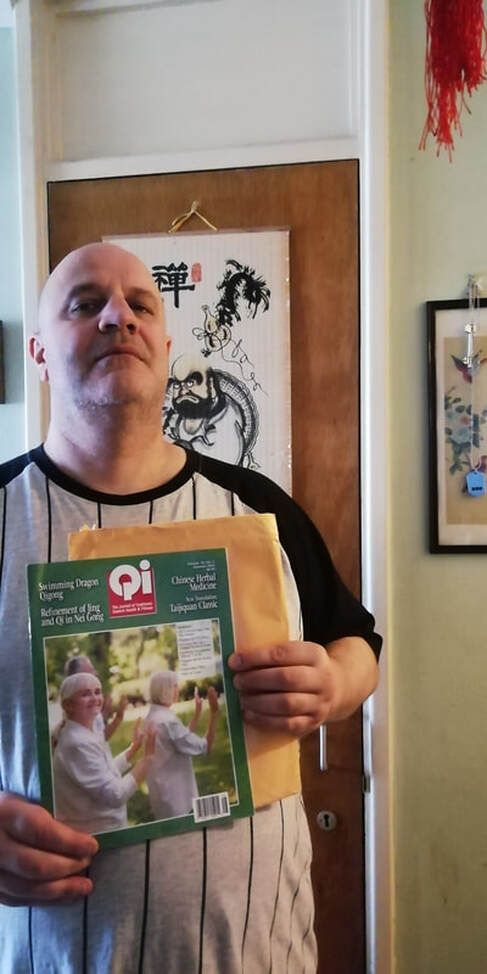
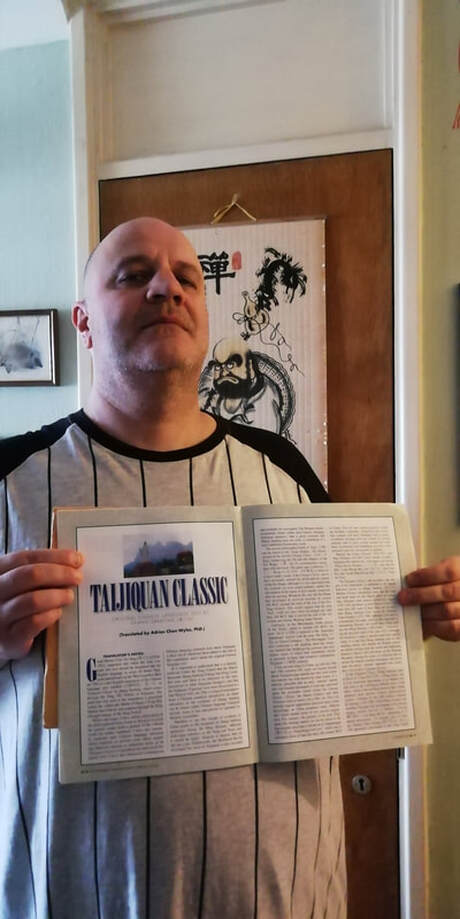
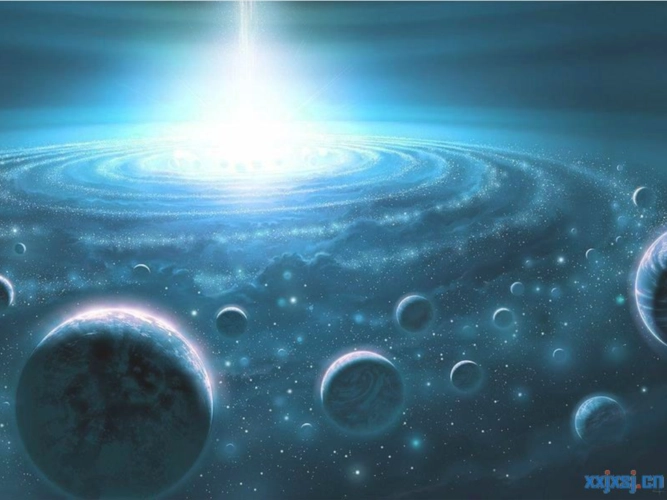
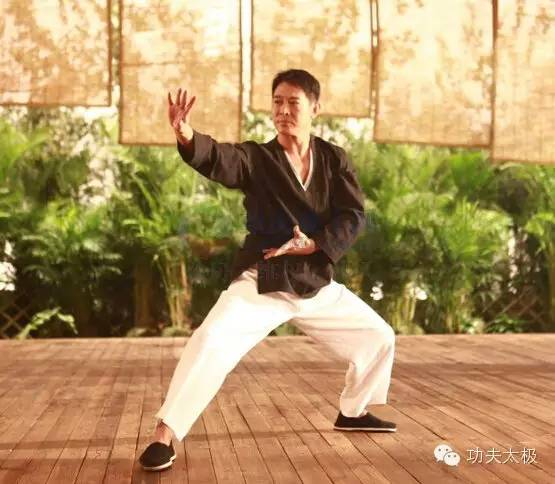
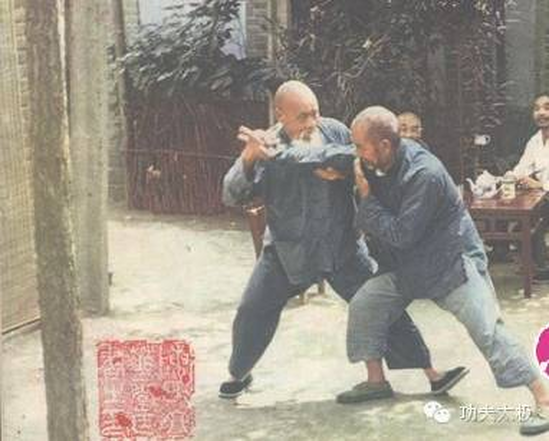
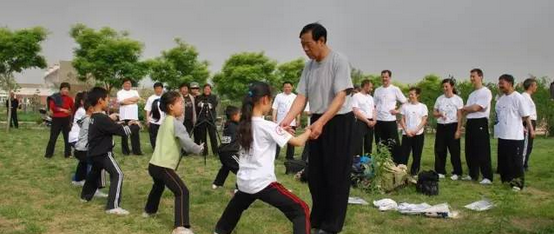
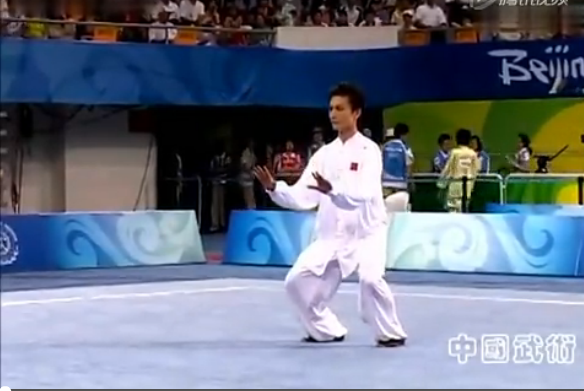
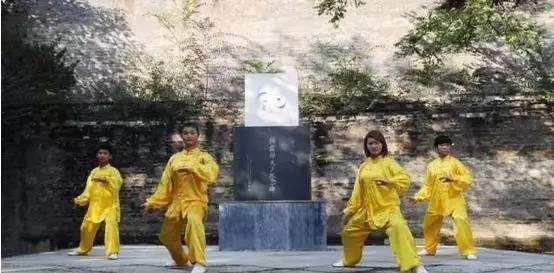
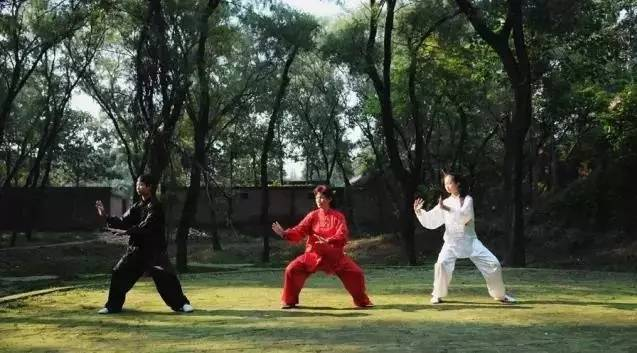
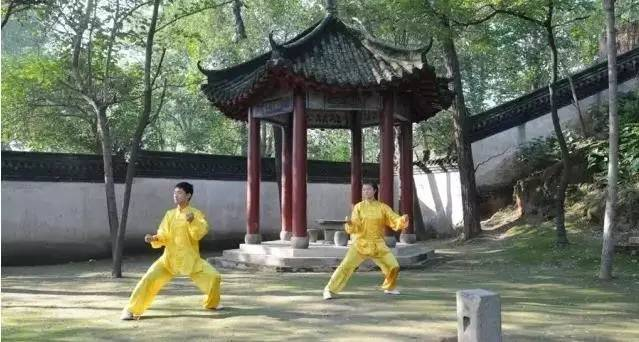
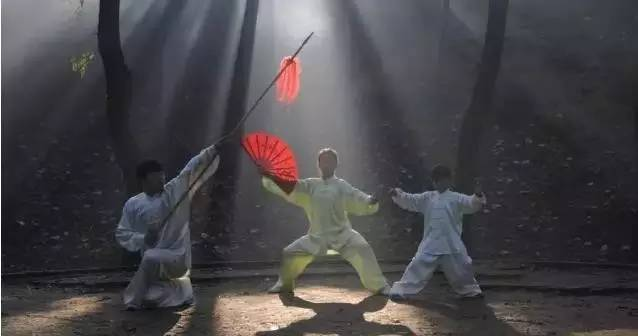
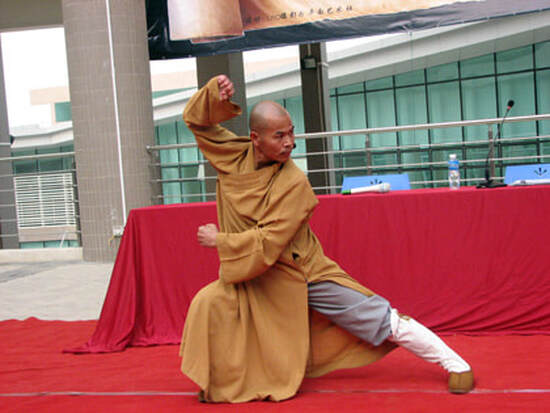
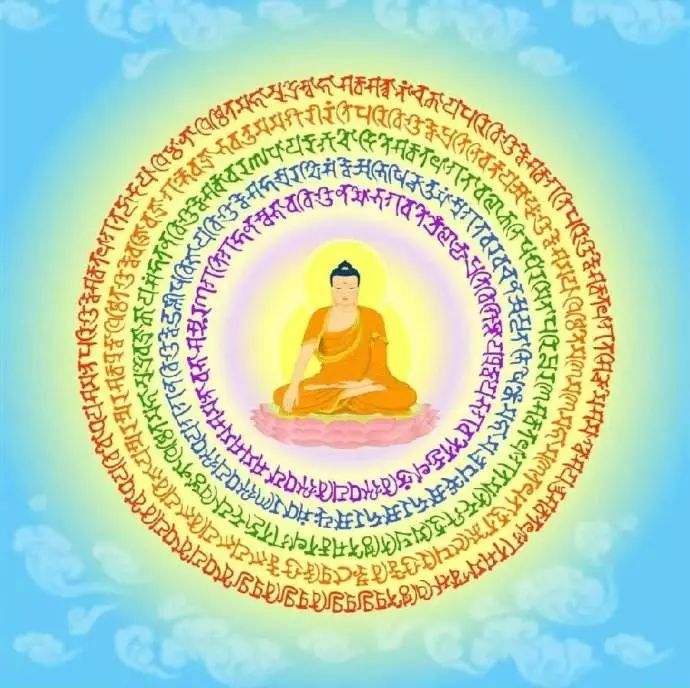
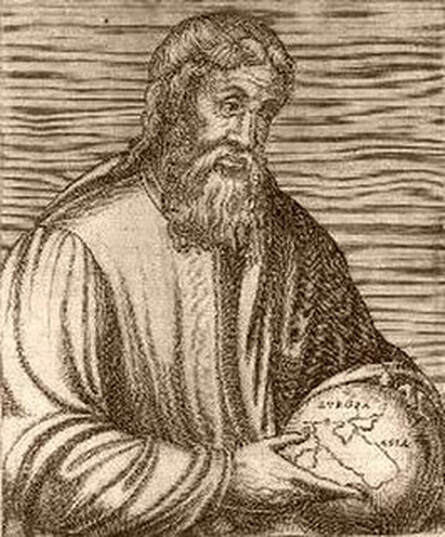
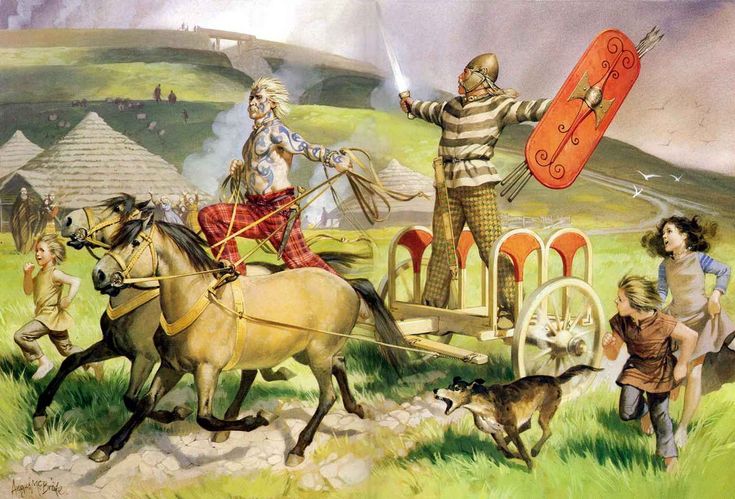
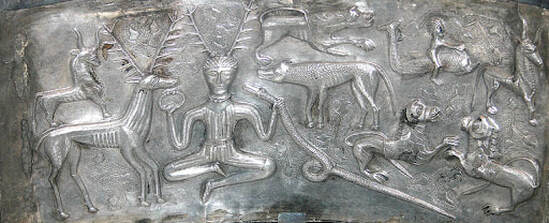
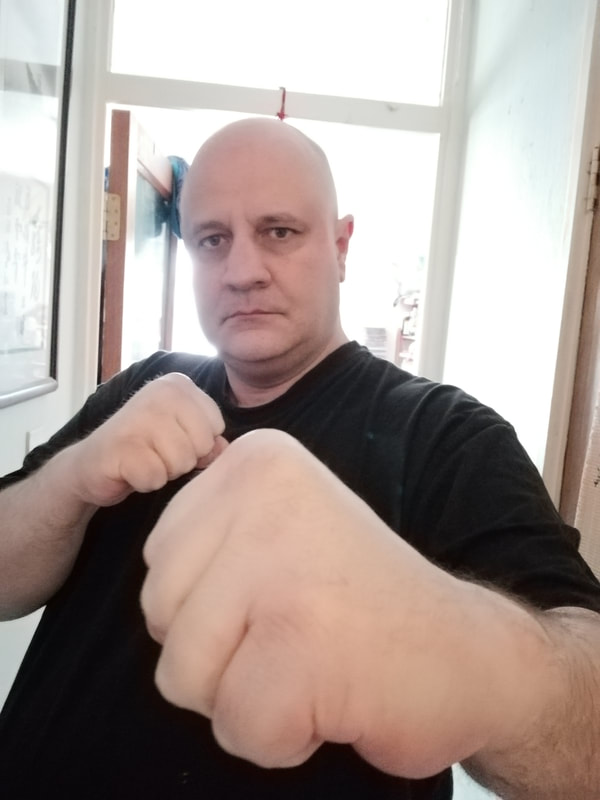
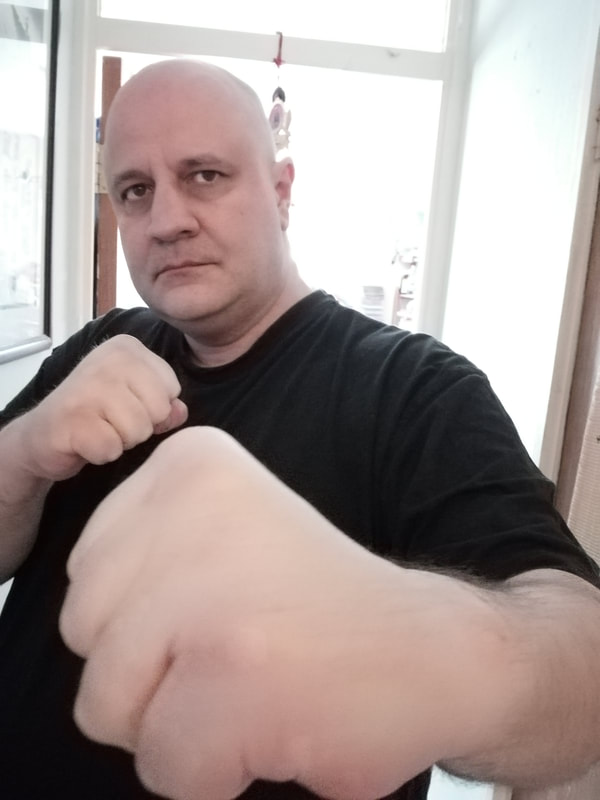
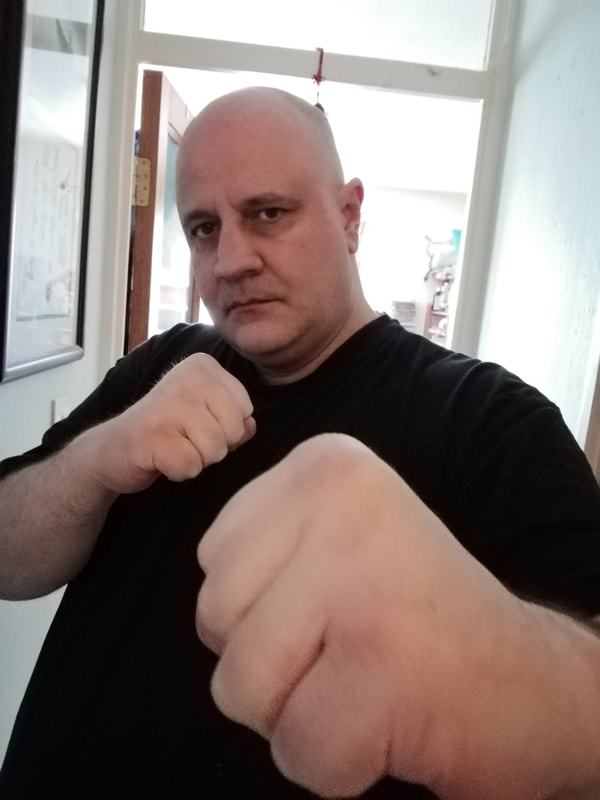
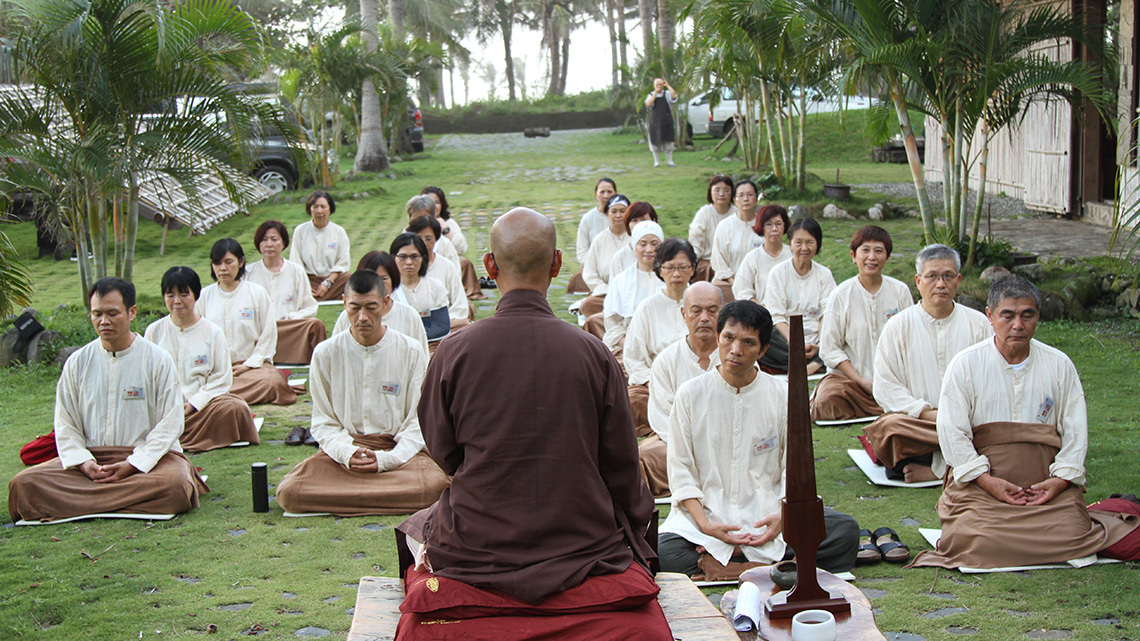
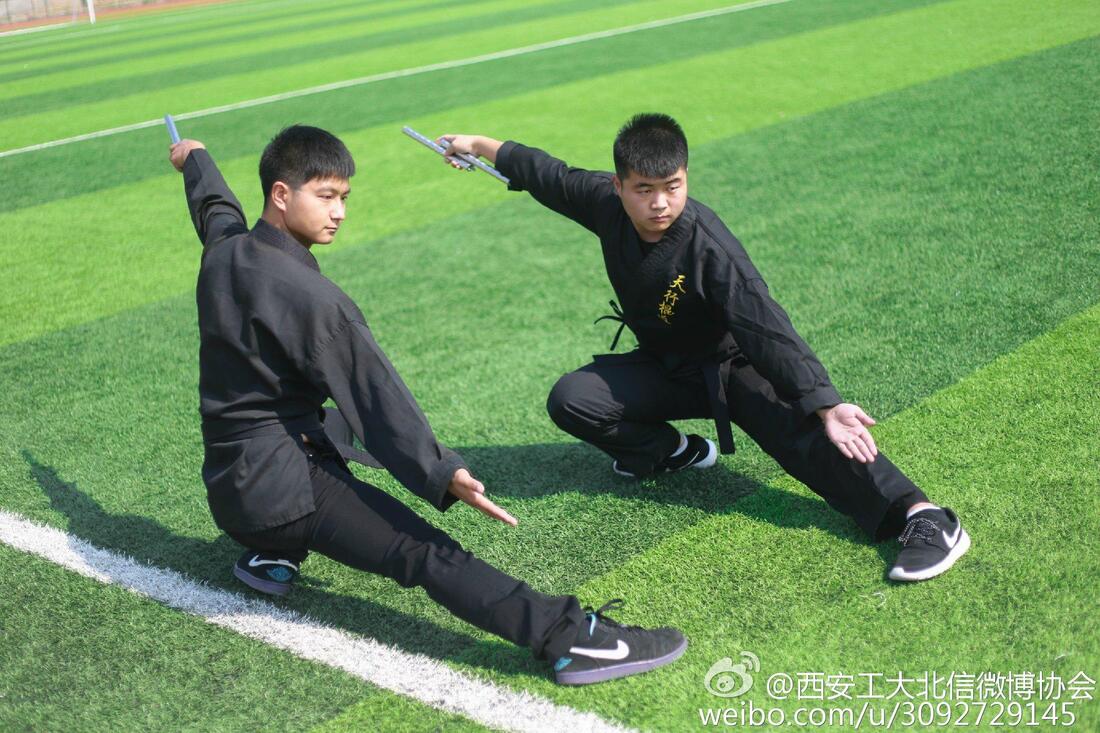
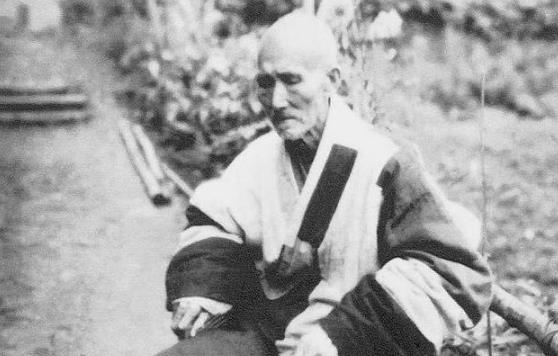
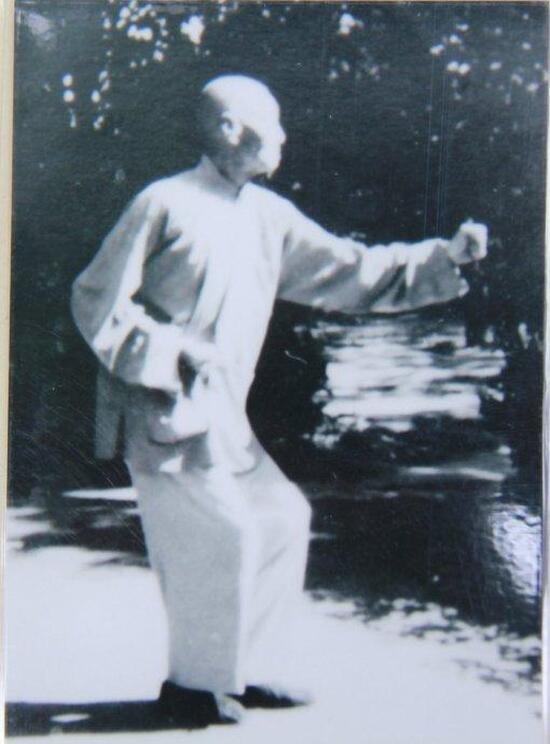
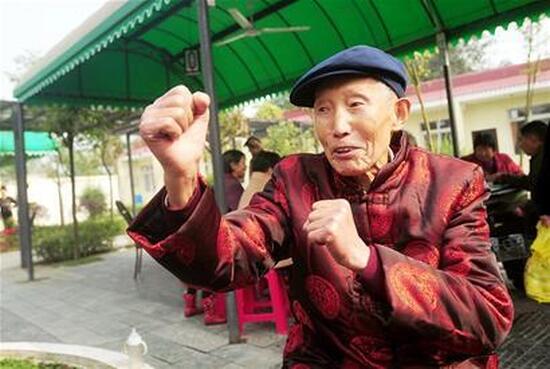
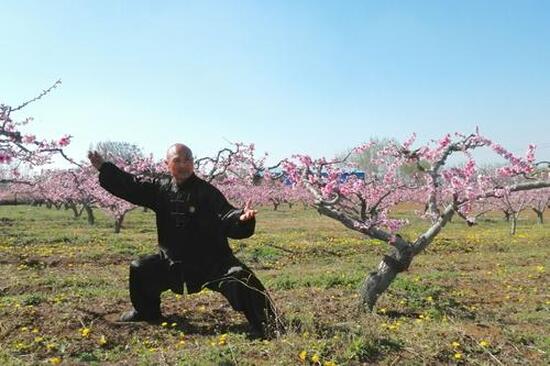
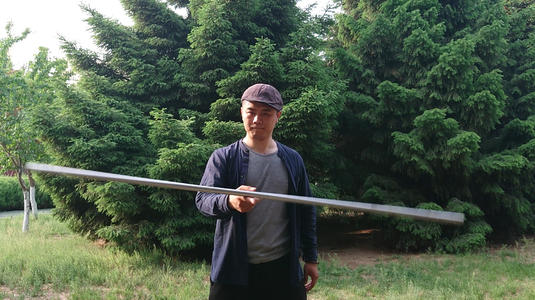
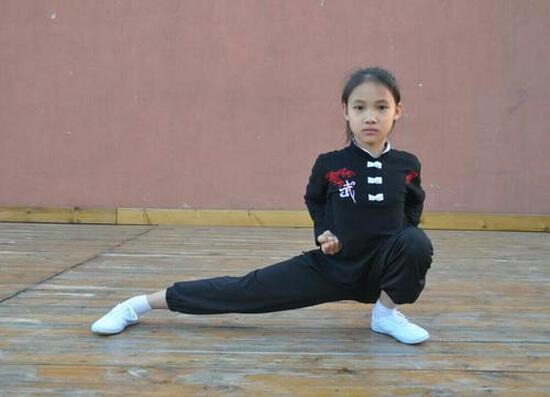
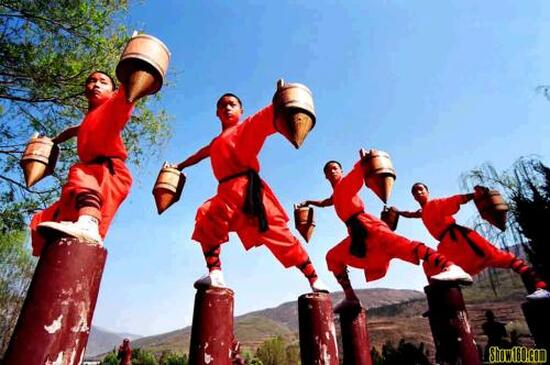
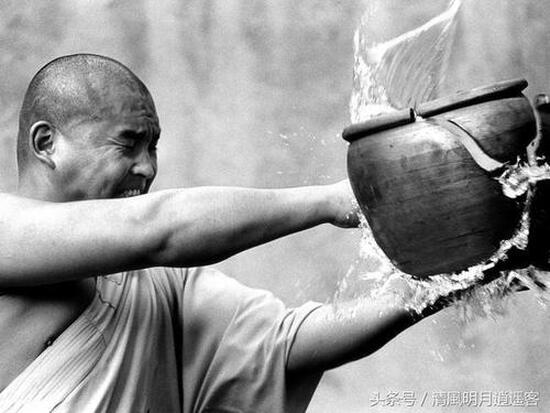
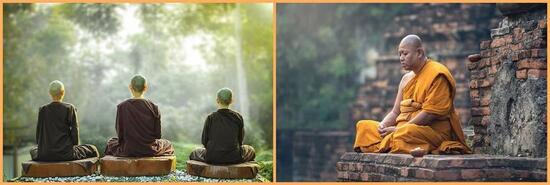
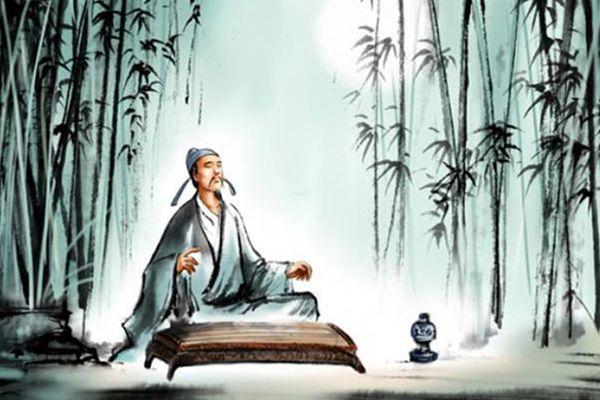
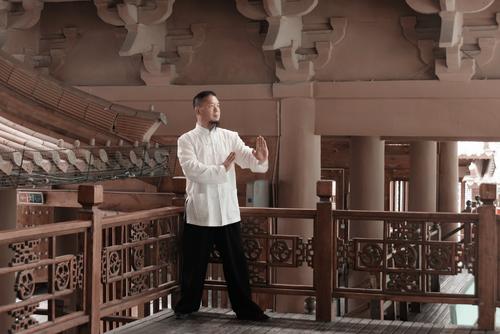
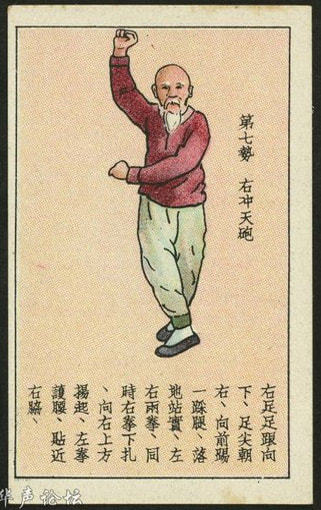
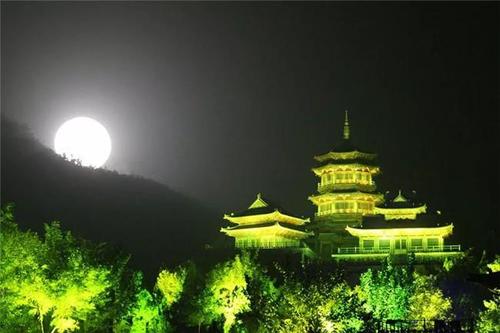
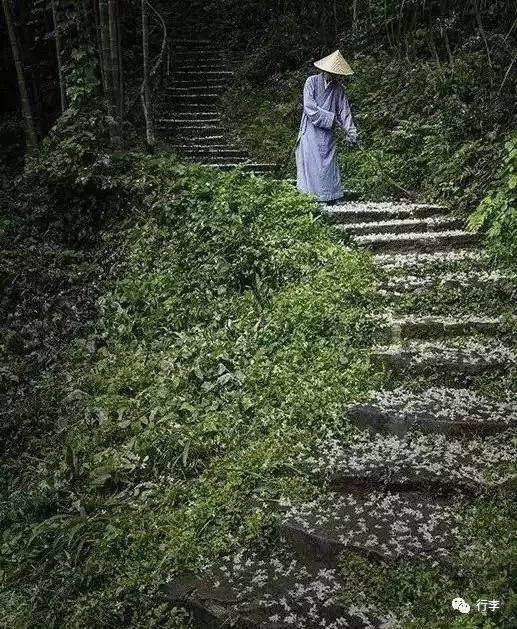
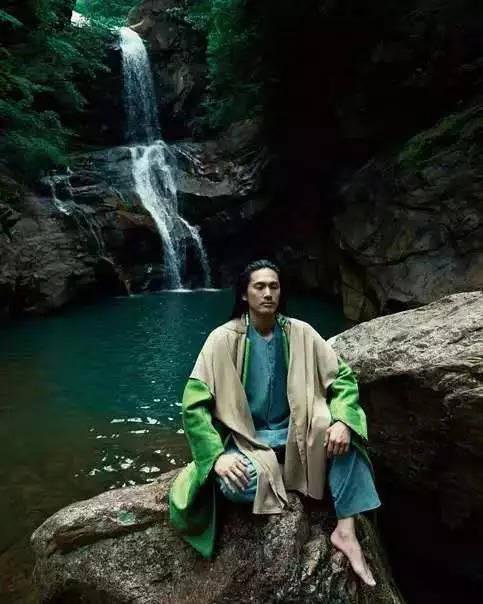
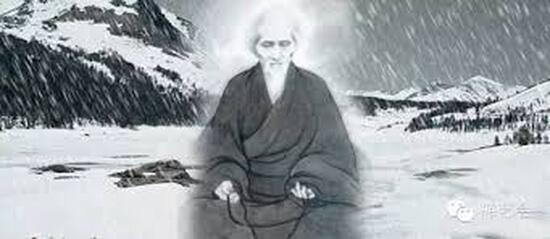
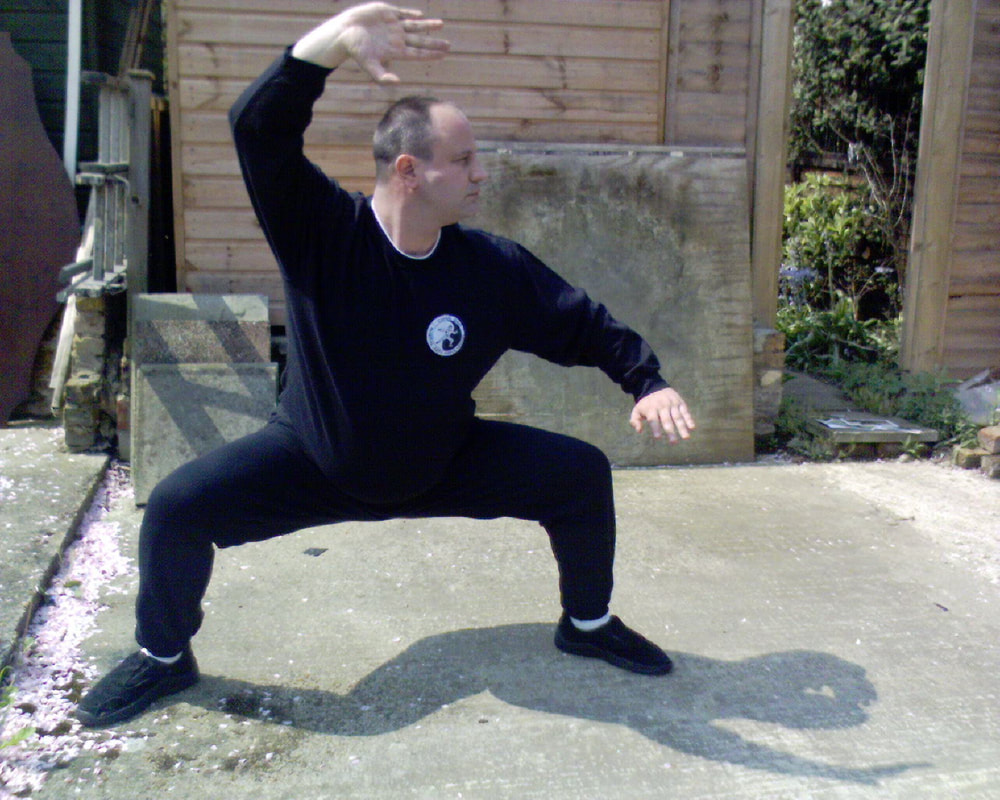
 RSS Feed
RSS Feed